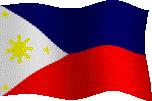
HISTORYThe region of what is now Nueva Vizcaya was settled by various upland peoples such as the Isinais, the Gaddangs, Igorots, Ilongots and Ifugaos, who took hold of the fertile river valleys that interspersed the rugged mountain ranges of the region.
The Spanish missionaries who penetrated the interior of the Cagayan Valley organized the area into mission settlements. The mission of Ituy was established in 1609 followed by the mission of Paniqui. Missionary work in the area was hampered by the continued belligerence of the native Gaddangs and Isinais and the attacks of the neighboring Ifugaos, and Ilongots. Several military expeditions were sent to pacify the region but the mountains continued to be frontier country.
In 1839, Governor Luis Lardizabal, upon the recommendation of the Alcalde Mayor of Cagayan, divided the province into two provinces. As created in 1839, Nueva Vizcaya comprised an extensive territory, which covered the old missions of Ituy and Paniqui and reached up to Ilagan in present day Isabela. The division was approved by a Royal Decree, issued in 1841 and the new province was administered from Camarag (present day Echague). When the province of Isabela was created in 1856, Nueva Vizcaya lost a major portion of its northern and northeastern territories and its capital was transferred to Bayombong.
The province of Nueva Vizcaya surrendered to the Filipino Republican forces in September 1898 and the Filipinos proceeded to hold it until President Emilio Aguinaldo was captured in 1901. American civil government was established in 1902. In 1908, the boundaries of Nueva Vizcaya were set. Nueva Vizcaya was the scene of one of the most important battles between advancing American and Filipino forces and the remnant Japanese forces under General Tomoyuki Yamashita. The Japanese forces decided to fortify the mountainous Balete Pass linking Nueva Vizcaya and Nueva Ecija. For three months, the contending forces fought bitterly for control of the passes. After the Americans won control of Balete Pass, it was renamed Dalton Pass after an American general who died in the attempt to capture it.
The province of Nueva Vizcaya used to be a territory of the vast Cagayan Valley which was once an integral political unit with one governor. In 1839, then Governor Luis Lardizabal issued an order creating Nueva Vizcaya into a politico-militar province upon the advice the alcalde mayor of Cagayan. The order was approved by a Royal Decree on April 10, 1841. The province had its first taste of civil governance in 1902 when it was organized by the Philippine Commission.
The present territory of Nueva Vizcaya was the result of changes emanating from the formal creation of the province of Isabel in May 1856, where a great portion of its northern territory was ceded to the newly-born province. The organization in 1908 of the province of Ifugao further reduced the area of Nueva Vizcaya which was forced to give up its northwest territory. The survey executed by the Bureau of Lands in 1914 further caused the diminution of its area and reduced again upon the enactment of the Administrative Code in 1917.
Even with these slices of land given away to new and emerging territories, the province of Nueva Vizcaya still held a wide territory. But agaian in 1971, with the passage of Republic Act 6394, Quirino, which was then a subprovince of Nueva Vizcaya, was separated from its mother province and made in to a regular province.
As it is today, Nueva Vizcaya is composed of 15 towns covering a land area of approximately 390, 389 hectares which about 10.72 percent of the regional (Cagayan Valley region) and 1.30 percent of the total national land area.
Since its birth as a province, traces of its history could still be reflected from the culture and customs of the early settlers which included the Ilongots (Bugkalots), Igorots, Ifugaos, Isinais, and the Gaddangs. The influx of civilization and the infusion of modern technology to the life stream of the province induced many immigrants from adjacent provinces to migrate to this province. The conglomeration of many people from varied origins in the province is a recognition of the province's vast and unexplored potentials.
Meanwhile, the history of religion in the province of Nueva Vizcaya dates back to the year 1607 when the Dominican Order dated the jungles to come to the hinterlands of the province to preach their belief. It was not until 1609, however, that the first settlements of a religious order was established in the southern half of the province.
The missionary work was continued in 1702 when a covenant was erected in Burubur at the foot of the Caraballo mountains in Sta. Clara, which is now a barangay of the town of Aritao. It was in this place where the first mass was celebrated and the first baptism of a Christian convert was held.
Back to top page
